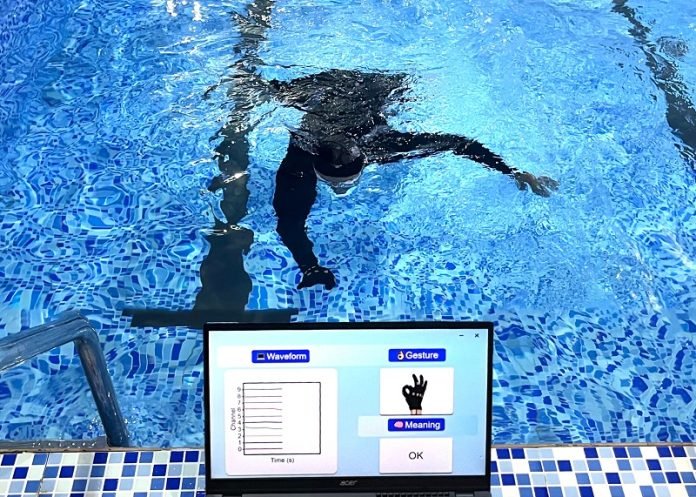
Scuba diving is a fantastic adventure, allowing people to explore underwater worlds. However, communicating while diving can be tricky.
Divers often use hand signals to talk to each other, like signaling “I’m okay” or warning “Shark!” But what if these signals are hard to see?
A new invention aims to solve this problem.
Researchers have come up with a special waterproof glove, called an “e-glove”, that lets divers send hand signals that turn into messages.
This could make underwater communication clearer, not just between divers, but also with people on the surface.
Normal gloves that turn hand movements into information exist, but they’re not made for water. They help people interact with computer worlds or assist in recovering hand movements after a stroke.
But making these gloves waterproof and comfy at the same time has been a challenge.
The team, including experts like Fuxing Chen and Lijun Qu, took inspiration from the underwater world to tackle this.
They looked at how starfish move using tiny tube-like feet. Mimicking this, they made waterproof sensors out of a flexible material called PDMS, which is also used in contact lenses.
They added a layer of silver to make it conduct electricity and placed these tiny sensors into a glove. These sensors can feel different pressures, from a light touch to a strong water flow. They put these sensors over the glove’s fingers.
Next, they taught a computer to understand hand signals. They made a list of 16 common diving signals and recorded what the sensors felt like for each one.
Using a special computer program, they translated these into messages that can be understood.
When they tested it, the glove worked amazingly well, both on land and underwater. The computer could understand the hand signals with almost perfect accuracy.
This e-glove could change how divers talk to each other, making it easier to communicate in situations where visibility is low or the environment is too noisy.
It’s a step forward in making diving safer and more fun, showing how technology can bridge gaps even under the sea.



